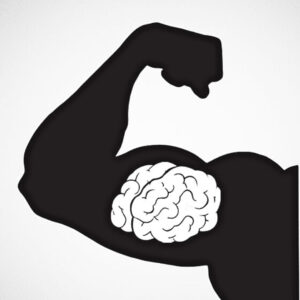Muscles are very important for movement, especially when it comes to maintaining balance. When we perform a simple task like walking or running, our muscles need to work together to complete the movement. To do this, our muscles have to learn how and when to contract during different stages of movement.
This process is called “muscle memory” and it’s something that happens when we repeat a certain action over and over again until the brain understands what we want our muscles to do and how they should react accordingly. Let’s learn more about muscle memory!
What is muscle memory?
To move, an athlete’s muscles need to contract and relax in a particular sequence. This process creates movement. But it’s not just one single movement — it’s complex coordinated activity.
How does an athlete get the brain to understand what their muscles should be doing? The way muscle memory works are by the brain remembering the initial signals from the muscles, which brings us to the next part of the process.
How does muscle memory occur?
There are three types of nerves in the body: These nerves connect the brain to individual muscles and allow them to work together to move. But nerves also have a “memory” of where they’ve been.
And when you act again, the nerves sense these signals and transfer them to the brain, which “remembers” the movement and gives the muscles the correct signals to contract. This process is called “plasticity”, a fancy term that means that the nerves can adapt to new information. This is how our nervous system can learn and improve with experience.
Why does muscle memory matter?
When we’re learning how to move our body, our muscles need to remember which signals are “correct” for certain movements. If a kid is learning how to walk, their muscles need to remember how to move the legs and feet together to take one step.
This is an extremely important process, especially for young athletes. If an athlete’s muscles don’t remember how to move correctly, they won’t be able to perform movements correctly and will likely injure themselves. And if an athlete is already injured, they won’t be able to participate in the activity that they enjoy. So everybody needs to maintain their muscle memory.

Benefits of muscle memory
As we just learned, muscle memory is when the brain remembers how muscles contract so that they can move correctly. But there are other benefits of muscle memory, too!
- Better Balance – When we are young, our muscles can learn how to move properly — this is called “neuromuscular coordination”. This is what allows our muscles to learn together and get stronger as we grow. When we don’t do this through exercise, we lose muscle memory and can’t move as well.
- Better Performance – When an athlete can properly move their body, they can perform better in sports, and improve their balance and quality of life.
- Injury Prevention – When we remember how our muscles should contract, it’s less likely that we’ll injure ourselves.
How to develop muscle memory
When it comes to muscle memory, repetition is key. There’s a reason why people always say: “Practice makes perfect.” And when it comes to building muscle memory, practice is crucial. A good way to begin developing muscle memory is to simply repeat an action that you already do regularly.
For example, if you use stairs daily, climb them instead of walking up the stairs. When using stairs, focus on the muscle memory aspect to help your body remember the action better. Try to keep your knees bent and your arms slightly bent at your sides so that you are using your core muscles for balance.
Can muscle memory be strengthened?
Yes. This is one of the most common questions that people have regarding muscle memory. The fact that it’s so commonly asked is a sign that people might want to learn more about it! Research shows that practicing a new skill regularly helps create new neural connections in the brain.
This means that you are strengthening the connections between your brain and muscle memory — similar to how a muscle is strengthened when it’s been exercised regularly. The longer you practice, the better you’re going to get at it. The more often you practice, the stronger your connections will become.
Conclusion
Muscle memory is when the brain remembers how muscles contract so that they can move correctly. When we’re young, our muscles can learn how to move properly, but as we get older, this skill gets dulled and we’re more likely to get injured. Fortunately, it’s possible to strengthen your muscle memory and improve your performance. The more often you practice, the better you’re going to get at it.
Training to build muscle memory in athletes is easy, as long as you do one thing: Make the movement heavy and/or longer each time you do it. Move heavy by using the same weight or heavier weight. Move longer by using a long distance. Practice the skill regularly, make it a part of your training and build muscle memory in athletes.
These are just a few ways you can build muscle memory in athletes. As you can see, there are many benefits of building muscle memory in athletes, from better performance to improved agility, balance, and mental focus. If you want to improve these areas in your game, make muscle memory a regular part of your training routine.